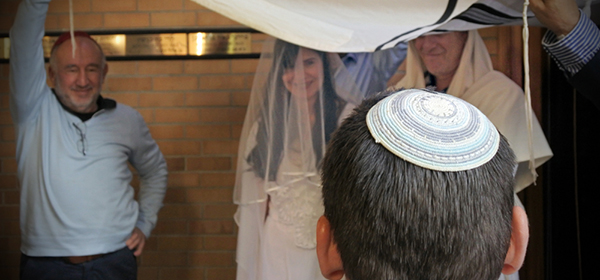A quick walk in the city or your local shopping centre may reveal a number of religious ‘uniforms’ that set one believer apart from another.
And although you may have noticed the odd headwrap, cassock or skullcap, you may not be aware of what the ‘fashion of the faithful’ actually means or the reasons they wear these clothes and costumes.
So, here’s why some religions wear what they wear.
Orthodox Jews
Orthodox Jewish men wear black garments to reflect a lack of concern for fashion and outside appearances. On their heads they wear a kippah (or yarmulke), which is meant to show a fear of god, or as the Talmud states “Cover your head in order that the fear of heaven may be upon you”. Sometimes, too, a tallit, or shawl, is worn underneath with twisted cords tied to the four corners. These are called tzitzit and are meant to be a reminder of the commandments. Orthodox Jewish women will often cover their hair with a wig or shawls and wear skirts below their knees as a sign of modesty.
Fashion differs between different Jewish sects: Haredi mean wear long beards and wide-brimmed hats and others wear side curls in response to a passage in the Torah which prohibits “rounding off the corners” of the head.
Buddhist monks and nuns
Buddhist monks wear a three-part robe: an inner garment or waistcloth, an upper robe and an outer robe, while nuns also wear a vest and bathing cloth. These robes are said to date back to the time of Buddha, when monastic robes were patched together with scraps of cloth to reflect a simple life and reflect a uniformity of intention. Although the colour of the robes vary by region, the orange yellow garments that are more commonly seen originated from early robes dyed with saffron or turmeric.
Catholic priests
Although the black clothes and white tab collar is common for a Catholic priest, the uniform was likely ‘borrowed’ from mid-19th century Protestant traditional garments. The black robes (cassocks) worn by Catholic clergy are to make priests instantly recognisable and to distinguish them from the ‘laity’.
“It is particularly important that the community be able to recognize the priest, man of God and dispenser of his mysteries, by his attire,” says the Directory for the Ministry and Life of Priests. While cassocks were once quite commonplace, nowadays, modern clergy often wear simple black suits and a Roman or clerical collar when not performing liturgical ceremonies.
Jain monks and nuns
The plain white robes worn by Jain monks and nuns represent an austere lifestyle. Another Jain sect, the Digambara reject all forms of worldly possessions and do not wear any clothes. The only worldly possessions they are seen carrying are a picchi, which is a broom made of fallen peacock feathers used for clearing the place before walking or sitting, a wooden water container called a kamandalu, and a scripture called a shastra.
Muslim women and men
Many people wonder why some Muslim women wear burqas or hijabs. According to the Quran, it is so men know women by their minds and not their bodies. Men may wear a taqiyah or topi, which is typically worn during prayer and for religious purposes. Muslims believe that the prophet Muhammad used to keep his head covered, and therefore men do the same in order to emulate him.
Sikhs
Traditional Sikhs wear a turban, or dastar, which hides unshorn hair and a wooden comb which are symbols of piety and dedication. Along with their modest attire they carry five articles of faith known as the ‘five Ks’ or panj kakaar, which represent the ideals of Sikhism: honesty, equality, fidelity, meditating on Waheguru and never bowing to tyranny.
These articles include the two already mentioned: Kes (uncut hair) and Kanga (wooden comb), along with an iron bracelet called a Kara (symbol of eternity), a Kirpan (small iron dagger or long curved sword) and Kachera, which are cotton undergarments that represent chastity.
Mormon missionaries
The plain clothes and haircuts worn by Mormon missionaries, or elders and sisters, are to ensure they look professional and attractive. Men wear business suits or black pants and white shirts with black ties. Women wear blouses with skirts or dresses that cover the knees. One piercing in each ear is allowed, but any other body decorations, including multiple piercings, tattoos, backpacks and sweatshirts are prohibited.
Is there a ‘uniform’ you have noticed being worn by certain religious groups? Do you know what it means?
Related articles:
Bringing religion to the people
Hanson pushes for burqa ban
Australia’s largest religion is …

